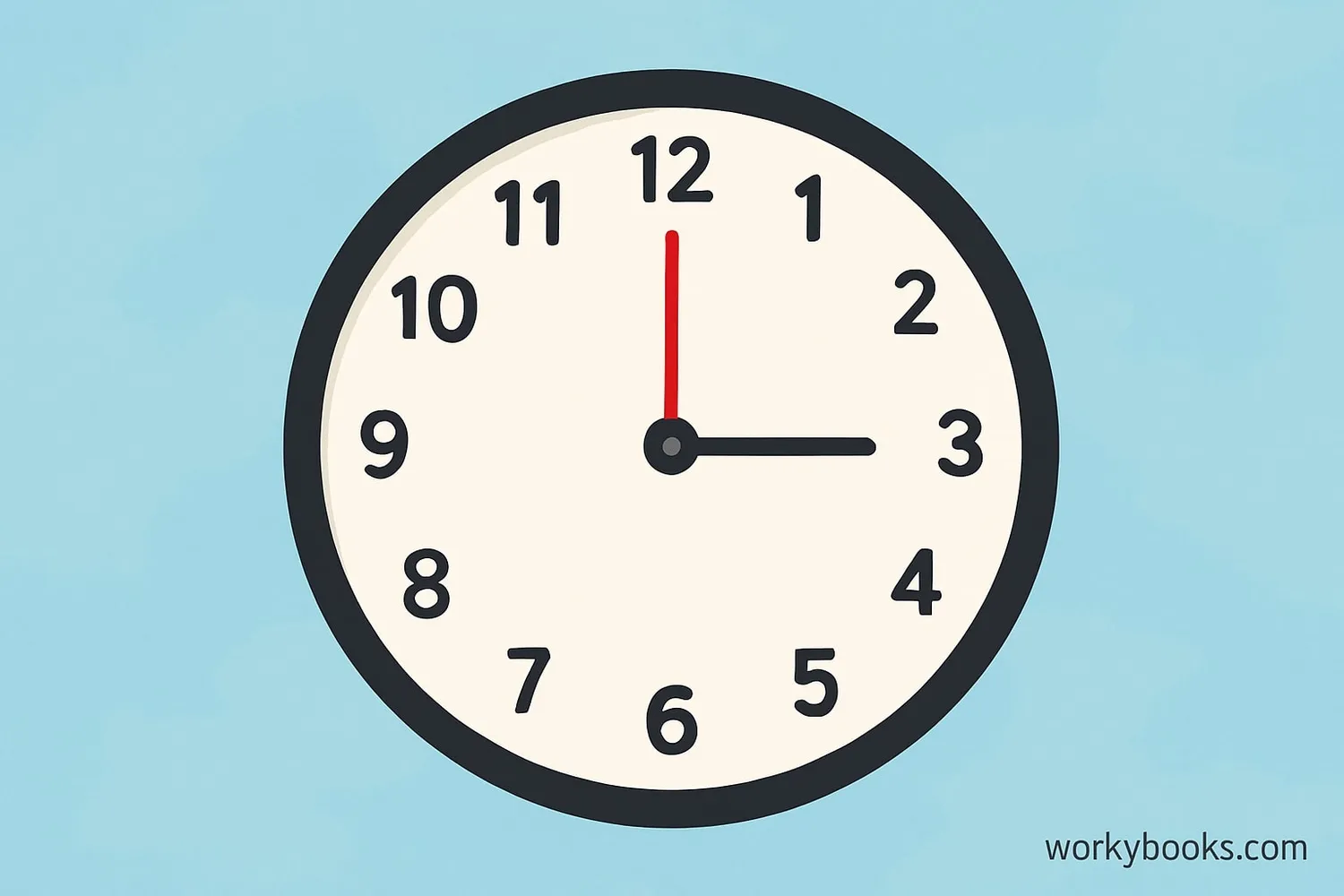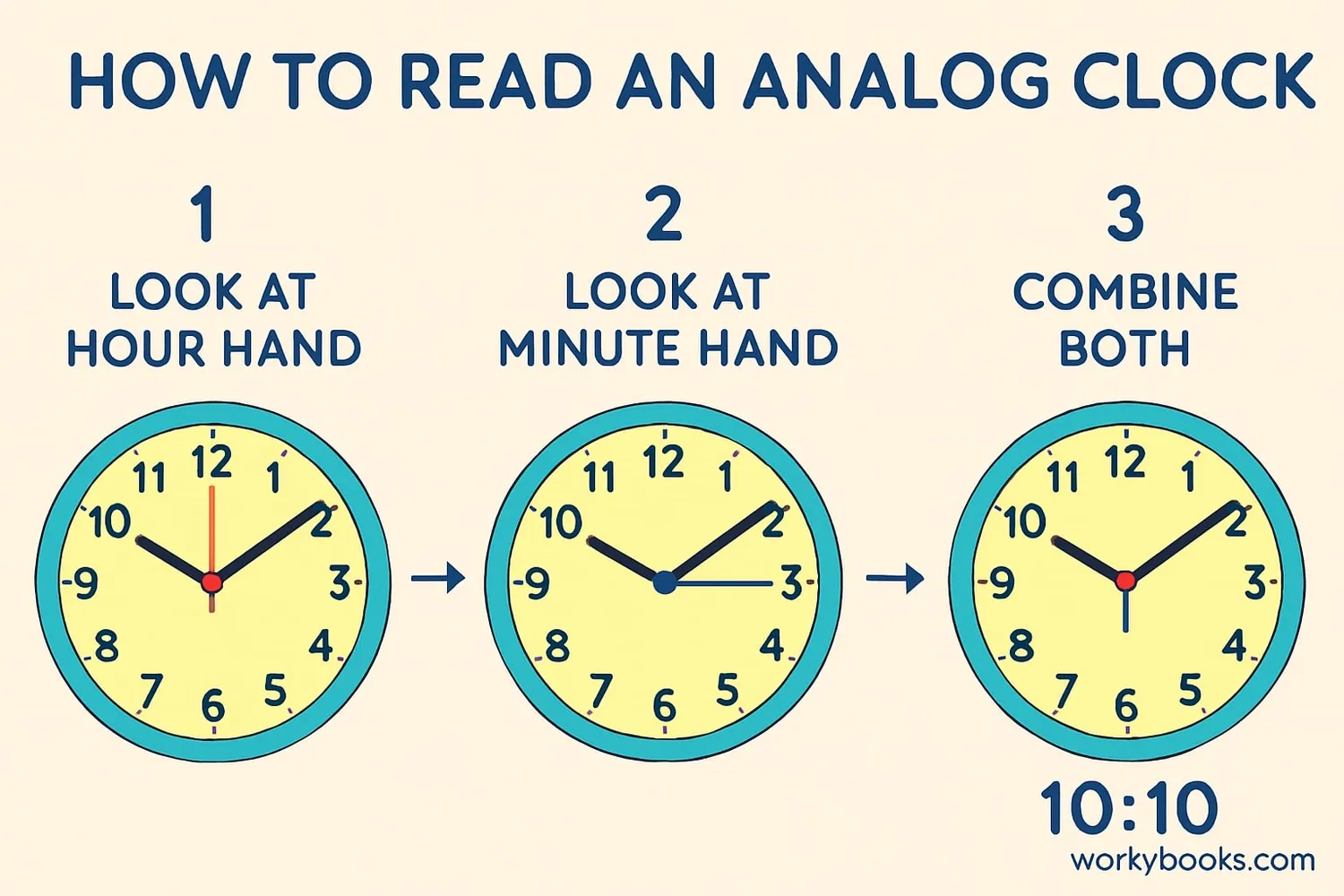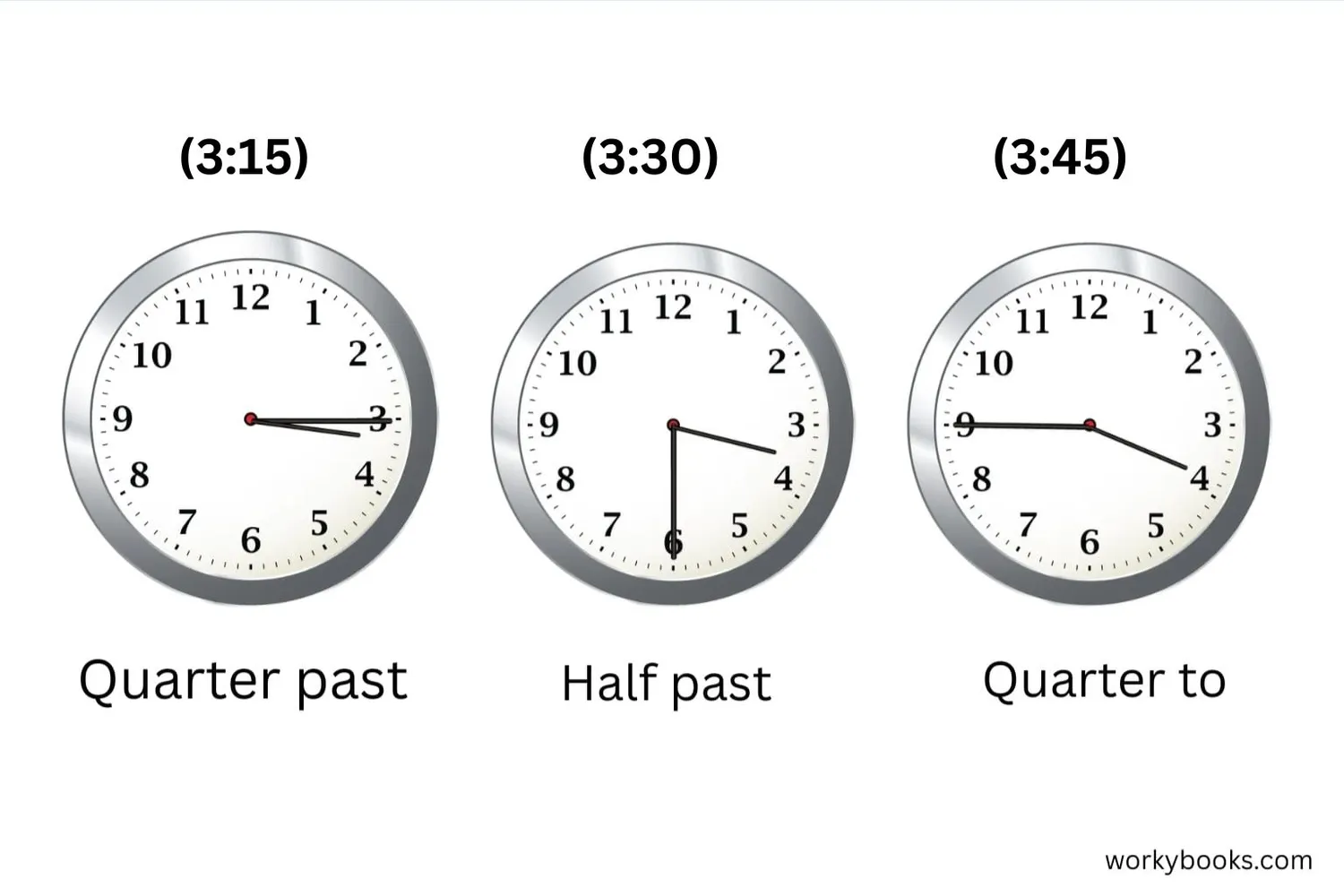Analog Clock - Definition, Examples, Quiz, FAQ, Trivia
Master time-telling skills with easy explanations, visual examples, and practice activities
What is an Analog Clock?

An analog clock is a traditional time-telling device with a circular face and moving hands.
It's different from digital clocks that show numbers. Analog clocks have been used for hundreds
of years to help people know what time it is.
The clock face has numbers from 1 to 12 around the edge, representing the hours.
The shorter hand points to the hour, while the longer hand points to the minutes.
Some clocks also have a second hand that moves quickly to show seconds.
Learning to read an analog clock helps you understand how time passes and is an important
skill for everyday life. Once you learn how, you'll be able to tell time anywhere you see
this type of clock!
Key Concept
An analog clock has hands that move around a circular face to show hours and minutes.
Parts of an Analog Clock

Let's learn about the important parts of an analog clock:
Hour Hand
The shorter hand that shows what hour it is. It moves slowly as time passes.
Minute Hand
The longer hand that shows how many minutes have passed in the hour.
Second Hand
The thinnest hand that moves quickly to show seconds (not all clocks have this).
Clock Face
The circular surface with numbers 1-12 that the hands move around.
Remember
Hour hand = short hand, Minute hand = long hand. "Short for hours, long for minutes!"
How to Read an Analog Clock

Reading an analog clock is easy when you follow these steps:
Step 1: Find the hour
Look at the short hour hand. It points to the current hour. If it's between two numbers,
it's the lower number (except between 12 and 1, which is 12).
Step 2: Find the minutes
Look at the long minute hand. Each number represents 5 minutes (1=5, 2=10, 3=15, etc.).
Count by 5s to the number it points to, then add extra minutes for the small marks in between.
Step 3: Put it together
Say the hour first, then the minutes. For example, if the hour hand is on 3 and the minute
hand is on 12, it's 3:00 (three o'clock). If the minute hand is on 6, it's 3:30 (three thirty).
3:00
Hour hand on 3
Minute hand on 12
3:15
Hour hand on 3
Minute hand on 3
3:30
Hour hand between 3 and 4
Minute hand on 6
3:45
Hour hand close to 4
Minute hand on 9
Special Times

There are special names for certain times on the clock:
Quarter Past
When the minute hand points to the 3 (15 minutes past the hour). Example: 3:15 is "quarter past three"
Half Past
When the minute hand points to the 6 (30 minutes past the hour). Example: 3:30 is "half past three"
Quarter To
When the minute hand points to the 9 (45 minutes past, or 15 minutes to the next hour). Example: 3:45 is "quarter to four"
These special names come from fractions of the clock:
- A quarter is ¼ of the clock (15 minutes)
- Half is ½ of the clock (30 minutes)
Remember: "Quarter past" is 15 minutes after the hour, and "Quarter to" is 15 minutes before the next hour.
Analog vs Digital Clocks

Both analog and digital clocks tell time, but they do it differently:
Analog Clocks
- Have moving hands on a clock face
- Show time in a circular format
- Help understand fractions of time
- Require counting minutes
Digital Clocks
- Show numbers directly
- Display exact time in digits
- Often show AM/PM
- Easier to read at first
Comparison Table
| Feature | Analog Clock | Digital Clock |
|---|---|---|
| Display | Hands on a clock face | Numbers on a screen |
| Learning Time | Helps understand time concepts | Easier to read |
| Movement | Continuous sweep | Changes instantly |
| Special Names | Quarter past, half past | Not typically used |
| Battery | Needs battery or winding | Needs battery or power |
Why Learn Analog?
Analog clocks help you understand how time passes in a visual way and are still widely used in many places.
Time-Telling Practice Quiz
Test your time-telling skills with this 5-question quiz. Choose the correct answer for each question.
Frequently Asked Questions
Here are answers to common questions about analog clocks:
Time Trivia
Discover interesting facts about time and clocks:
Sundials
The earliest time-telling devices were sundials, used over 3,500 years ago! They used shadows cast by the sun to tell time during daylight hours.
Time Zones
The world has 24 time zones because it takes 24 hours for Earth to rotate once. Each time zone is about 15 degrees of longitude wide.
Fastest Clock Hand
The second hand moves fastest on an analog clock. It makes a full circle every 60 seconds, while the minute hand takes 60 minutes, and the hour hand takes 12 hours.
World's Largest Clock
The Abraj Al-Bait Clock Tower in Mecca, Saudi Arabia is the world's largest clock face. Each of its four faces is 43 meters (141 feet) in diameter!


